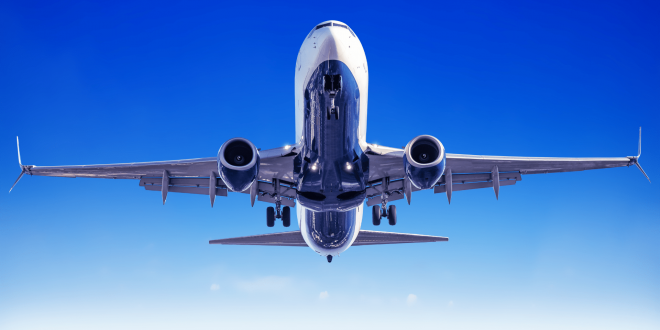Rolls-Royce declared on Friday that its “world’s fastest all-electric aircraft ” hit a maximum speed of 623 kilometers an hour (about 387 mph).
In Rolls-Royce’s opinion, the “Spirit of Innovation” is the world’s fastest all-electric aircraft, not to be confused with Rolls-Royce Motor Cars, owned by BMW.
The Fédération Aéronautique Internationale will be asked to submit three world records to achieve that objective.
After flying for 3 kilometers at 555.9 kms/h, reaching a maximum speed of 532.1 kms/h after 15 kilometers, and reaching a height of 3,000 meters in just 202 seconds, the aircraft caught a great deal of attention.
Throughout these trips, this aircraft attained top speeds of 623 kilometers per hour.
The “Spirit of Innovation” is the responsibility of ACCEL, or Accelerating Electrification of Flight.
In addition to YASA, which specializes in electric motors and controllers, the initiative includes Electroflight, described by Rolls-Royce as an aviation startup. Mercedes-Benz owns a 100% stake in Electroflight.
BTIS and Innovate the UK have each contributed 50% of the project’s funding, led by the Aerospace Technology Institute.
A Rolls-Royce representative says the aircraft uses a 400-kilowatt electric engine and a “power-dense battery pack” never before produced in the aerospace industry.
The first flight occurred in September, during which it soared for about 15 minutes over the skies of the United Kingdom.
According to World Wildlife Fund reports, air travel is now the most carbon-intensive activity a person can partake in, which means aviation debates are focusing increasingly on ways to cut its environmental impact.
Many companies have been developing zero-emission airplane concepts in the past few years.
In September, for example, a hydrogen fuel-cell aircraft flew for the first time over England.
Furthermore, Airbus released data in the same month regarding three hydrogen-powered concept planes that might be operational by 2035.
The CEO of Ryanair, Michael O’Leary, was skeptical in a recent interview with CNBC’s Steve Sedgwick regarding the potential of new and emerging technology in the airline industry.
I believe we need to be honest again.” On Oct. 20, he added, “I don’t think you’ll see any technology that will replace carbon-based planes or jets for the next decade.”
He told reporters, “In my opinion, hydrogen fuels will not arrive until 2030, sustainable fuels will not arrive until 2030, and electric propulsion systems will not be ready until 2030.”
Our earthly life will end after my work in the aviation industry is complete. But I hope it happens before then.”
Kwasi Kwarteng, Ghana’s Business Secretary, said the inaugural flight of Royce’s Spirit of Innovation is a significant milestone in the transition to cleaner forms of aviation worldwide.
With this accomplishment and the records we hope to set in the future, we continue to remain at the forefront of aeronautical innovation.
The government’s support of initiatives like this will help advance the cutting-edge technologies that will leverage investments and allow aviation to become cleaner and greener to stop climate change.
It took off on a 15-minute flight from the Boscombe Down facility, maintained by QinetiQ on behalf of the UK Ministry of Defence.
We will acquire vital performance data on the aircraft’s electric power and propulsion systems during a rigorous testing phase that begins with the maiden flight at the selected location.
YASA, a leading provider of electric motors and controllers, and aviation startup Electroflight are significant partners in ACCEL, which stands for Accelerating Electrification of Flight.
Even as ACCEL followed social distancing guidelines and other health standards set by the UK Government, it continued to innovate.
This project has received half of its funding through a partnership between the Aerospace Technology Institute (ATI), Business, Energy and Industrial Strategy (BEIS), and Innovate the UK.
An ACCEL initiative shows the UK’s leadership in the revolution of zero-emission aviation in the run-up to COP26.
Gary Elliott, CEO of the Aerospace Technology Institute, said that the Spirit of Innovation’s first flight highlights innovative technology’s potential to solve some of the world’s most pressing challenges.
The ATI is supporting initiatives like ACCEL so that the UK can acquire the new skills needed to become a leader in aviation decarbonization.”
ACCEL’s maiden flight was a great success, made possible by the efforts of all those involved.
During the year that the UK hosts COP26, the world speed record attempt will be of interest to the public.”
The Rolls-Royce electric propulsion system suits VTOL and commuter aircraft with electric takeoff and landing.
The ACCEL project’s technology will manufacture products for these new markets.
Air-taxis require battery qualities very similar to those needed for the ‘Spirit of Innovation’ to reach 300+ MPH (480+ kms/h) speeds – the speed we hope to attain in our attempt to break the world record.
Also, Rolls-Royce and Tecnam are currently developing an all-electric commuter aircraft for Scandinavia’s largest regional airline, Wider. The aircraft should be ready for revenue service by 2026.
The Rolls-Royce “Spirit Royce’s of Innovation” has broken the record for fast electric airplanes two months after its inaugural flight, reaching a top speed of 387.4 mph, reports Gizmodo.
As well as the top speed, it claimed the lowest time to 3,000 meters (9,843 feet) altitude (202 seconds) and the lowest speed of 345.4 miles per hour over a 3 kilometer course.
Even though the authorized record is still to be recognized, a speed of 345.5 MPH would be 132 MPH faster than the existing record of 213 MPH established by a Siemens-powered Extra 330LE.
The tests were conducted on Nov. 16 by Rolls-Royce (the aircraft company, not the car manufacturer).
A record must be certified by the Fédération Aéronautique Internationale (FAI), which is responsible for aviation records worldwide.
Although only making its maiden flight in September, these speeds would be impressive considering how much faster it could become with more time.
According to Gizmodo, the Rolls-Royce-powered “Spirit Royce of Innovation” has reached a record-breaking top speed of 387.4 mph just two months after her debut.
It also claims to have traveled at 345.4 mph along a 3 kilometer (1.86 mile) track and reached altitudes of 3,000 meters (9,843 feet) in 202 seconds.
If indeed the record for the fastest of 345.5 mph is maintained, it will be 132 mph quicker than the current record of 213 mph established by a Siemens-powered Extra 330LE.
Rolls-Royce (not the automaker, but the aircraft company) performed the tests on Nov. 16.
To get its records certified, the company is submitting the records to the Fédération Aéronautique Internationale (FAI), the aviation authority responsible for certifying worldwide records.
If confirmed, the plane would travel at impressive speeds considering it only flew for the first time in September, indicating that with more experience, it may travel even faster.
Featuring a canopy that pulls back, the Spirit of Innovation appears to be a tail-dragger airplane (steering from the back with the canopy pulled back). Engine power is 750 volts and 400 kW (535 horsepower).
According to Rolls-Royce, its 6,480-cell battery pack is the “highest-density propulsion battery pack ever created in aerospace.”
Due to existing batteries’ energy density being 50 times lower than jet fuel, electric airplanes aren’t viable, Engadget explained in an explanation.
However, the technology is promising for very short flights like the one between Vancouver and Victoria in Canada, which takes 30 minutes.
A Spirit of Innovation’s use of an electric motor to climb made it possible for the aircraft to maintain full power during a time-to-altitude record attempt, unlike non-turbocharged ICE engines.
This battery-powered, 750 volt, 24 foot (7.3 m) span aircraft, designed and built by YASA, can generate over 400 kW (536 hp) from its 6,480-cell battery pack with cork insulation when operated at 750 volts.
In addition to offering the maximum energy density for an airplane, its cooled battery pack should also have a range of 320 km; 170 miles.
Developed by Sharp Nemesis manufacturers and based on its carbon fiber Nemesis NXT racer, it can cruise as fast as 282 km (522 kms/h) with a 350hp (260kW) engine and as fast as 355 km (657 kms/h) with a well-tuned engine.
Battery power output at maximum power will be 1,006 horsepower or 750kW (1,003 kW) continuous.
There is the same weight difference between the batteries, motors, and control systems as between the standard engine and fuel tank.
The NXT can fly anywhere with a maximum takeoff weight of 1,200 kgs (2,645 lbs). With 216 KWh, its 1350 kgs battery pack weighs 16 tons.
Another issue with electric planes is overheating batteries. To offer a heat barrier, Spirit Of Innovation’s battery cells are housed in fire-resistant canisters coated with Portuguese cork (the same material that’s on the top of your wine bottle).
The plane’s sensors can collect 20,000 pieces of data per second and assess the battery cells’ charge, temperature, and voltage. The pilot is informed and cautioned regarding the condition of the batteries during the flight.
As environmental concerns about aviation emissions have grown, more and more emphasis has been placed on the development of electric planes.
Electric flight has been studied since the late 1800s when French aviator Gaston Tissandier flew an electric airship. Still, it is not yet feasible for your annual trip to the Med due to the heavyweight of any plane with sufficient battery power for long flights.
Manufacturers are instead developing short-distance planes that could be used for air taxis or short-distance flights.
EasyJet is developing an electric 186-seat jet that can fly between London and Amsterdam for up to an hour on one charge.
In the meantime, Urban AirPort plans to build a skyport in Coventry where air taxis and cargo drones will be operated.
The newspaper notes that Rolls-Royce intends to utilize the knowledge gained from the ACCEL program in developing electric propulsion systems for electric vertical takeoff and landing (eVTOL) air taxis and bigger electric passenger aircraft.
Battery cells decay over time, which is an issue. Battery recharging can be done between 500 to 1,500 times before they become too degraded for aircraft use. That information comes from the ACCEL team.
The use of maximum power during takeoffs and landings could be a concern for eVTOL operators, who would have to charge their batteries regularly to prevent wear and tear.
 Next Tech Magazine Get The Latest Technology Updates
Next Tech Magazine Get The Latest Technology Updates







